
Motorola Edge 50 smartphone review – When luxury features meet a mid-range price
Framelessly good.
The Motorola Edge 50 is barely bigger than its predecessor, but it features a larger screen and a much more powerful battery. In addition, it boasts lots of storage and speedy 6 GHz WLAN. This is all good news, but are there also negatives about the phone?Florian Schmitt, 👁 Florian Schmitt (translated by Daisy Dickson) Published 🇩🇪 🇫🇷 ...
Possible competitors compared
Rating | Version | Date | Model | Weight | Drive | Size | Resolution | Price |
|---|---|---|---|---|---|---|---|---|
| 78.6 % | v8 | 10 / 2024 | Motorola Edge 50 SD 7 Gen 1, Adreno 644 | 180 g | 512 GB UFS 2.2 Flash | 6.70" | 2712x1220 | |
| 86.8 % v7 (old) | v7 (old) | 07 / 2023 | Motorola Edge 40 Dimensity 8020, Mali-G77 MP9 | 171 g | 256 GB UFS 3.1 Flash | 6.55" | 2400x1080 | |
| 80.9 % | v8 | 09 / 2024 | OnePlus Nord 4 SD 7+ Gen 3, Adreno 732 | 199.5 g | 512 GB UFS 4.0 Flash | 6.74" | 2772x1240 | |
| 81.9 % | v8 | 07 / 2024 | Google Pixel 8a Tensor G3, Mali-G715 MP7 | 188 g | 128 GB UFS 3.1 Flash | 6.10" | 2400x1080 | |
| 87.4 % v7 (old) | v7 (old) | 05 / 2024 | Samsung Galaxy A55 5G Exynos 1480, Xclipse 530 | 213 g | 256 GB UFS 3.1 Flash | 6.60" | 2340x1080 |
Please note: We have updated our rating system and the results of version 8 are not comparable with the results of version 7. More information is available here.
Case and connectivity – Colorful if desired
The Motorola Edge 50 is part of Motorola's high-end series, but costing only around $600, it is situated more in between the premium mid-range and high-end class.
Screen glass extending over its edges matches the name of the Motorola Edge 50 and the entire series, as (almost) all of the devices look like this. Of course, the mid-range phone isn't completely borderless, but a screen-to-body ratio of 93.1% is still impressive. There are also only narrow bezels along the top and bottom.
In addition to the chic Koala Gray, the phone comes in the colorways Jungle Green and Peach Fuzz—two brighter colors. The back is covered with artificial leather or artificial suede and boasts a very high-quality feel.
While the phone is slightly longer than its predecessor, it is still quite compact with regard to its 6.7-inch screen. Plus, weighing in at 180 grams, it is comparatively lightweight. Thanks to its rounded sides, the phone feels super slim and is comfortable to hold. The metal frame only protrudes slightly at the top and bottom corners, creating unpleasant edges that can impair the feel of it.
The Edge 50 has been built very stably and can neither be affected through twisting nor by applying strong pressure. Its screen is protected by Gorilla Glass 5 and if you accidentally drop the Edge 50 into freshwater, then you needn't panic, as it is IP68 protected against dust and water.
Unfortunately, Motorola has installed a USB 2.0 port, so data transfers are only possible at standard speed and mirroring the display can only be done wirelessly. However, NFC for mobile payments is on board. It only has one nano-SIM slot, but you can also store an eSIM profile. This means that the phone supports dual SIM operation.
Communication and software – Very fast WLAN on the Edge 50
Motorola's smartphone features WiFi 6E, meaning it can also access the lesser-used 6-GHz frequency for WLAN connections. This yields good results: During our test, we measured receiving values of over 1,600 MBit/s. As a result, you can make use of a gigabit data line very well, but such speeds only really become interesting when using a fast internal network structure.
The smartphone boasts similarly good mobile frequency support, including enough 4G and 5G frequencies to allow it to be used further afield to access the web on the go. We repeatedly tested its reception on a random basis during our test and compared it with high-end smartphones. The Motorola Edge 50 performed well and often showed just as good reception as the even more high-end devices.
The smartphone can be located via satellite and we set off on a bike ride to determine the accuracy of its positioning capabilities. The Edge 50 scored highly, deviating only minimally from our actual route in very few places and not even being disturbed by narrow old town streets with a weak signal. All in all, the Edge 50 gains our full recommendation for navigation tasks.
Its operating system is based on Android 14 and Motorola has changed very little about it. All in-house functions are outsourced to separate apps so that they can be kept up to date without needing a complete system update. Some, perhaps unwanted, third-party apps come pre-installed—such as social networks or games. However, they can be uninstalled easily. At the time of testing, the latest security patches were from August 2024, so they could do with an update.
Motorola's update policy is somewhat strange: While the cheaper Edge 50 Neo has more up-to-date security patches and is supposed to receive updates for 5 years, the Edge 50 only has a 3-year update promise and will see new Android versions up to Android 17.
| Networking | |
| Motorola Edge 50 | |
| iperf3 transmit AXE11000 | |
| iperf3 receive AXE11000 | |
| iperf3 transmit AXE11000 6GHz | |
| iperf3 receive AXE11000 6GHz | |
| Motorola Edge 40 | |
| iperf3 transmit AXE11000 | |
| iperf3 receive AXE11000 | |
| OnePlus Nord 4 | |
| iperf3 transmit AXE11000 | |
| iperf3 receive AXE11000 | |
| Google Pixel 8a | |
| iperf3 transmit AXE11000 | |
| iperf3 receive AXE11000 | |
| iperf3 transmit AXE11000 6GHz | |
| iperf3 receive AXE11000 6GHz | |
| Samsung Galaxy A55 5G | |
| iperf3 transmit AXE11000 | |
| iperf3 receive AXE11000 | |
Sustainability and operation – Still some catching up to do, except for in its packaging
So, we aren't terribly enthusiastic about its software supply, nor about how long the device's service life is. From a sustainability point of view, its packaging is good, as it is plastic-free, the adhesives are water-based and the cardboard parts are largely made from recycled material.
Unfortunately, there is no data on the smartphone's CO2 consumption during its life cycle. There are also no repair instructions or spare parts for self-repair available for Motorola Edge smartphones.
The Edge 50's 120-Hz display is scanned for touches up to 360 times per second and can therefore be operated very quickly. The hardware buttons on the right-hand side of the case are for volume control and standby. They are easy to feel and have a clean pressure point.
A fingerprint sensor is hidden behind the screen. It is positioned quite far down so that it is easy to reach even with small hands. Once saved, fingerprints are recognized reliably and the phone is unlocked quickly. You can also gain access via facial recognition, which works just as reliably and even in low ambient light: the screen serves as a light source for recognition.
Cameras – Powerful even when zooming
Motorola has installed three fully-fledged, decent camera sensors on the back of the phone. Its main camera uses a 50-megapixel sensor from Sony. It takes quite good pictures, which are still reasonably sharp even when enlarged. Colors appear vibrant but not oversaturated and the dramatic sky in the photo of our surroundings didn't overwhelm the sensor.
In low light and high contrasts, the main camera could do with brightening up a little better in dark areas, but overall, it showed good sharpness and a decent representation of this difficult scene. The main camera also had to prove itself in our test lab: It showed slight weaknesses with very fine structures and its contrast also wasn't quite as high with a red background, for example. In very low light, the subject was still recognizable, but barely brightened.
The camera can record videos in a maximum of 4K at 30fps. The autofocus works quickly and you can usually rely on it without a doubt. The exposure compensation is also competent and, in most cases, works fast enough not to be unpleasantly noticeable.
A 13-megapixel wide-angle camera has also been installed. Unfortunately, it didn't produce a sharp image in our test and didn't brighten up the photos particularly well. It also features a 10-megapixel telephoto lens, which is supported by an optical image stabilizer. This enables a hybrid zoom and even higher zoom rates still look quite good thanks to the dedicated lens with a higher focal length.
There is a 32-megapixel camera on the front of the phone, which works using pixel binning and therefore usually takes 8-megapixel pictures. These could have a little more dynamic range in the shots, but the selfies still look sharp and rich in detail.
Image comparison
Choose a scene and navigate within the first image. One click changes the position on touchscreens. One click on the zoomed-in image opens the original in a new window. The first image shows the scaled photograph of the test device.
Main camera plantMain camera surroundingsMain camera low lightUltra-wide-angle camera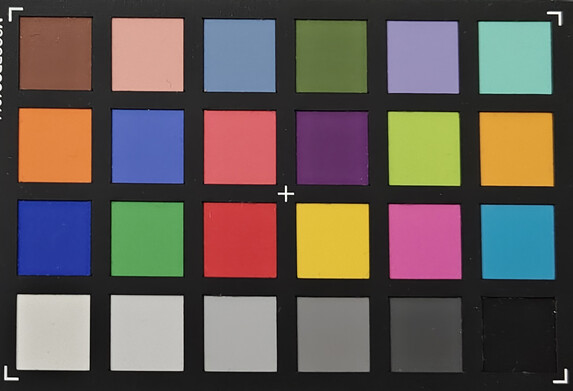
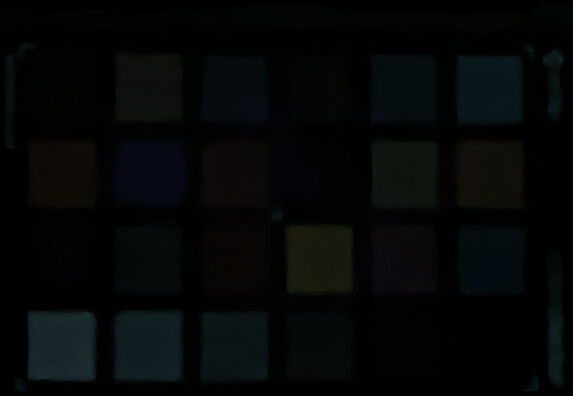
Display – Bright and color-accurate
The Edge 50 comes with a 6.7-inch P-OLED display. It can handle a frame rate of up to 120 Hz and in our tests using a spectrophotometer and the CalMAN software, its brightness was similar to that of other smartphones in the same price range: we measured up to 1,185 cd/m² when depicting a full white screen and up to 1,546 cd/m² when showing smaller excerpts (APL 18). This means you can use the phone very well outdoors and the screen content is still easy to see even on brighter days.
We hardly have anything negative to say about its color reproduction in "natural" mode and a color cast isn't visible to the naked eye. This means that with the right settings, screen colors can be evaluated very well for professional purposes.
We measured flickering at low brightness levels at a frequency of 397 Hz and an amplitude of 22 %. This could be an issue for sensitive people, who should definitely try out the screen before buying to avoid any problems. However, Motorola also makes use of DC dimming at a frequency of 1,626 Hz, which can reduce the flickering.
| |||||||||||||||||||||||||
Brightness Distribution: 95 %
Center on Battery: 1164 cd/m²
Contrast: ∞:1 (Black: 0 cd/m²)
ΔE ColorChecker Calman: 1.14 | ∀{0.5-29.43 Ø4.78}
ΔE Greyscale Calman: 2 | ∀{0.09-98 Ø5}
96.9% sRGB (Calman 2D)
Gamma: 2.213
CCT: 6553 K
| Motorola Edge 50 P-OLED, 2712x1220, 6.7" | Motorola Edge 40 OLED, 2400x1080, 6.6" | OnePlus Nord 4 AMOLED, 2772x1240, 6.7" | Google Pixel 8a AMOLED, 2400x1080, 6.1" | Samsung Galaxy A55 5G Super AMOLED, 2340x1080, 6.6" | |
|---|---|---|---|---|---|
| Response Times | 4% | -298% | -61% | -43% | |
| Response Time Grey 50% / Grey 80% * (ms) | 1.1 ? | 1.14 ? -4% | 10 ? -809% | 2.83 ? -157% | 1.53 ? -39% |
| Response Time Black / White * (ms) | 1 ? | 0.89 ? 11% | 2.3 ? -130% | 1.05 ? -5% | 1.47 ? -47% |
| PWM Frequency (Hz) | 397 | 144 | 119.2 | 120 | 120 |
| PWM Amplitude * (%) | 22 | 12 45% | 26.3 -20% | ||
| Screen | -22% | -12% | 8% | -3% | |
| Brightness middle (cd/m²) | 1164 | 1023 -12% | 1102 -5% | 1518 30% | 962 -17% |
| Brightness (cd/m²) | 1156 | 1042 -10% | 1102 -5% | 1466 27% | 967 -16% |
| Brightness Distribution (%) | 95 | 90 -5% | 94 -1% | 88 -7% | 99 4% |
| Black Level * (cd/m²) | |||||
| Colorchecker dE 2000 * | 1.14 | 1.6 -40% | 1.43 -25% | 1.2 -5% | 1.6 -40% |
| Colorchecker dE 2000 max. * | 3.46 | 4.3 -24% | 4.04 -17% | 3.3 5% | 2.6 25% |
| Greyscale dE 2000 * | 2 | 2.8 -40% | 2.4 -20% | 2 -0% | 1.5 25% |
| Gamma | 2.213 99% | 2.27 97% | 2.213 99% | 2.2 100% | 2.13 103% |
| CCT | 6553 99% | 6457 101% | 6385 102% | 6786 96% | 6382 102% |
| Total Average (Program / Settings) | -9% /
-16% | -155% /
-107% | -27% /
-15% | -23% /
-13% |
* ... smaller is better
Display Response Times
| ↔ Response Time Black to White | ||
|---|---|---|
| 1 ms ... rise ↗ and fall ↘ combined | ↗ 0.5 ms rise | |
| ↘ 0.5 ms fall | ||
| The screen shows very fast response rates in our tests and should be very well suited for fast-paced gaming. In comparison, all tested devices range from 0.1 (minimum) to 240 (maximum) ms. » 3 % of all devices are better. This means that the measured response time is better than the average of all tested devices (20.2 ms). | ||
| ↔ Response Time 50% Grey to 80% Grey | ||
| 1.1 ms ... rise ↗ and fall ↘ combined | ↗ 0.5 ms rise | |
| ↘ 0.6 ms fall | ||
| The screen shows very fast response rates in our tests and should be very well suited for fast-paced gaming. In comparison, all tested devices range from 0.165 (minimum) to 636 (maximum) ms. » 4 % of all devices are better. This means that the measured response time is better than the average of all tested devices (31.6 ms). | ||
Screen Flickering / PWM (Pulse-Width Modulation)
| Screen flickering / PWM detected | 397 Hz Amplitude: 22 % Secondary Frequency: 1626 Hz | ||
The display backlight flickers at 397 Hz (worst case, e.g., utilizing PWM) . The frequency of 397 Hz is relatively high, so most users sensitive to PWM should not notice any flickering. However, there are reports that some users are still sensitive to PWM at 500 Hz and above, so be aware. In comparison: 53 % of all tested devices do not use PWM to dim the display. If PWM was detected, an average of 8091 (minimum: 5 - maximum: 343500) Hz was measured. | |||
Measurement series with fixed zoom level and different brightness settings
Performance, emissions and battery life – More could've been possible
The Qualcomm Snapdragon 7 Gen 1 is used as the phone's SoC. It ensures that the system runs smoothly in the vast majority of situations but is still relatively weak for this price range, and during our test, it was in some cases significantly outperformed by the SoC in its predecessor (the Motorola Edge 40), namely the MediaTek Dimensity 8020.
The Edge 50 also lags a little behind devices in the same price range in terms of graphics performance, and is more designed for gaming at 30fps than 60fps. Motorola has additionally made some savings when it comes to its storage, as the phone only uses UFS 2.2 storage which, although its capacity is large, is comparatively quite slow.
We measured a significant temperature increase on its case under prolonged load: Up to 55.9 °C at room temperature is certainly not pleasant and is clearly too high; on hot summer days, the temperature can rise to a critical level and shut down the device. Interestingly, the SoC didn't seem to be affected by these high temperatures and wasn't throttled even after numerous runs of a benchmark.
The speaker on the bottom edge is supported by the earphones, which enables slight stereo effects and makes the sound feel a little fuller. In general, the sound is pretty good—music is played quite loudly and isn't distorted even at maximum level. However, you shouldn't expect too much bass or low mids.
External speakers or headphones can be connected via the USB-C port or Bluetooth. Both worked without any problems during our test. Almost every Bluetooth audio codec currently available is supported, so even more exotic codecs can be used.
At 5000 mAh, its battery is significantly more powerful than that of its predecessor, but the phone's runtimes are only marginally better: 16:06 hours in our Wi-Fi test is by no means bad and should be enough to ensure that the phone doesn't have to be charged every single day with moderate use. Other smartphones, such as the Samsung Galaxy A55 5G, last significantly longer with the same battery capacity.
The Edge 50 can be charged using a cable at up to 68 watts. It then takes a maximum of just over an hour to reach 100 % charge again. Wireless charging is possible at up to 15 watts, but you'll have to provide your own charger as Motorola does not supply one.
| Geekbench ML | |
| 0.6 TensorFlow Lite NNAPI | |
| Google Pixel 8a | |
| Average of class Smartphone (186 - 2488, n=24, last 2 years) | |
| OnePlus Nord 4 | |
| 0.6 TensorFlow Lite GPU | |
| OnePlus Nord 4 | |
| Google Pixel 8a | |
| Average of class Smartphone (123 - 1478, n=28, last 2 years) | |
| 0.6 TensorFlow Lite CPU | |
| Google Pixel 8a | |
| OnePlus Nord 4 | |
| Average of class Smartphone (267 - 1317, n=28, last 2 years) | |
| Geekbench AI | |
| Single Precision TensorFlow NNAPI 1.1 | |
| Average of class Smartphone (122 - 4122, n=39, last 2 years) | |
| Motorola Edge 50 | |
| Average Qualcomm Snapdragon 7 Gen 1 (n=1) | |
| Samsung Galaxy A55 5G | |
| Half Precision TensorFlow NNAPI 1.1 | |
| Average of class Smartphone (122 - 32120, n=39, last 2 years) | |
| Motorola Edge 50 | |
| Average Qualcomm Snapdragon 7 Gen 1 (n=1) | |
| Samsung Galaxy A55 5G | |
| Quantized TensorFlow NNAPI 1.1 | |
| Average of class Smartphone (118 - 44381, n=39, last 2 years) | |
| Motorola Edge 50 | |
| Average Qualcomm Snapdragon 7 Gen 1 (n=1) | |
| Samsung Galaxy A55 5G | |
| Motorola Edge 50 | Motorola Edge 40 | OnePlus Nord 4 | Google Pixel 8a | Samsung Galaxy A55 5G | Average 512 GB UFS 2.2 Flash | Average of class Smartphone | |
|---|---|---|---|---|---|---|---|
| AndroBench 3-5 | 26% | 110% | -24% | 4% | -11% | 56% | |
| Sequential Read 256KB (MB/s) | 1002.6 | 1876.88 87% | 3592.8 258% | 1509.65 51% | 1688.53 68% | 1026 ? 2% | 2243 ? 124% |
| Sequential Write 256KB (MB/s) | 909.6 | 1587.93 75% | 2898.2 219% | 255.31 -72% | 831.44 -9% | 930 ? 2% | 1865 ? 105% |
| Random Read 4KB (MB/s) | 296.6 | 235.66 -21% | 250.4 -16% | 165.98 -44% | 351.47 18% | 234 ? -21% | 296 ? 0% |
| Random Write 4KB (MB/s) | 358.3 | 229.44 -36% | 276.2 -23% | 243.82 -32% | 132.11 -63% | 261 ? -27% | 339 ? -5% |
Temperature
(-) The maximum temperature on the upper side is 52.4 °C / 126 F, compared to the average of 35.2 °C / 95 F, ranging from 21.9 to 247 °C for the class Smartphone.
(-) The bottom heats up to a maximum of 55.9 °C / 133 F, compared to the average of 34 °C / 93 F
(+) In idle usage, the average temperature for the upper side is 24.7 °C / 76 F, compared to the device average of 32.9 °C / 91 F.
3DMark Stress Test
Speakers
Motorola Edge 50 audio analysis
(+) | speakers can play relatively loud (88.5 dB)
Bass 100 - 315 Hz
(-) | nearly no bass - on average 26% lower than median
(±) | linearity of bass is average (10% delta to prev. frequency)
Mids 400 - 2000 Hz
(+) | balanced mids - only 4.6% away from median
(+) | mids are linear (5% delta to prev. frequency)
Highs 2 - 16 kHz
(+) | balanced highs - only 3.4% away from median
(+) | highs are linear (3.8% delta to prev. frequency)
Overall 100 - 16.000 Hz
(±) | linearity of overall sound is average (17.6% difference to median)
Compared to same class
» 13% of all tested devices in this class were better, 8% similar, 79% worse
» The best had a delta of 11%, average was 35%, worst was 134%
Compared to all devices tested
» 34% of all tested devices were better, 8% similar, 58% worse
» The best had a delta of 4%, average was 24%, worst was 134%
Samsung Galaxy A55 5G audio analysis
(+) | speakers can play relatively loud (91.4 dB)
Bass 100 - 315 Hz
(-) | nearly no bass - on average 22.4% lower than median
(+) | bass is linear (6.2% delta to prev. frequency)
Mids 400 - 2000 Hz
(±) | reduced mids - on average 6.5% lower than median
(+) | mids are linear (5% delta to prev. frequency)
Highs 2 - 16 kHz
(±) | higher highs - on average 5.4% higher than median
(+) | highs are linear (3% delta to prev. frequency)
Overall 100 - 16.000 Hz
(±) | linearity of overall sound is average (17.6% difference to median)
Compared to same class
» 13% of all tested devices in this class were better, 8% similar, 79% worse
» The best had a delta of 11%, average was 35%, worst was 134%
Compared to all devices tested
» 34% of all tested devices were better, 8% similar, 58% worse
» The best had a delta of 4%, average was 24%, worst was 134%
Runtimes
| Battery Runtime - WiFi Websurfing | |
| Average of class Smartphone (12.1 - 54.1, n=207, last 2 years) | |
| Samsung Galaxy A55 5G | |
| OnePlus Nord 4 | |
| Motorola Edge 50 | |
| Motorola Edge 40 | |
| Google Pixel 8a | |
Pros
Cons
Verdict – The Edge 50 is good, but its SoC is tripping it up
The Motorola Edge 50 features a design and a storage configuration that wouldn't look out of place on much more expensive phones. This includes fast 6 GHz Wi-Fi, a large battery, a powerful zoom camera system and wireless charging functionality. Its precise location services and bright screen are also fun.
Even so, Motorola has made savings when it comes to the phone's SoC and memory modules, and you can really tell when using the Edge 50: Although you can navigate through the system smoothly most of the time, the phone falters with more complex apps and gaming at more than 30fps is hardly possible when running demanding games.
It is also a mystery why Motorola has promised longer updates for its cheaper Edge 50 Neo than for its more expensive devices. You'll only get updates for a standard period of 3 years. It also still has some catching up to do when it comes to sustainability criteria such as self-repair.
If you're on the hunt for a high-quality mid-range device that wouldn't be out of place amongst high-end phones, then the Motorola Edge 50 could be the one for you. However, it doesn't boast the highest performance.
If your smartphone needs to be a little more compact, then the cheaper Edge 50 Neo—also from Motorola—could be a good alternative. The Samsung Galaxy A55 5G offers significantly longer runtimes.
Price and availability
At the time of writing, the Motorola Edge 50 is not yet available to purchase in the United States.
Please note: We have updated our rating system and the results of version 8 are not comparable with the results of version 7. More information is available here.
Motorola Edge 50
- 10/18/2024 v8
Florian Schmitt
Transparency
The selection of devices to be reviewed is made by our editorial team. The test sample was provided to the author as a loan by the manufacturer or retailer for the purpose of this review. The lender had no influence on this review, nor did the manufacturer receive a copy of this review before publication. There was no obligation to publish this review. As an independent media company, Notebookcheck is not subjected to the authority of manufacturers, retailers or publishers.
This is how Notebookcheck is testing
Every year, Notebookcheck independently reviews hundreds of laptops and smartphones using standardized procedures to ensure that all results are comparable. We have continuously developed our test methods for around 20 years and set industry standards in the process. In our test labs, high-quality measuring equipment is utilized by experienced technicians and editors. These tests involve a multi-stage validation process. Our complex rating system is based on hundreds of well-founded measurements and benchmarks, which maintains objectivity. Further information on our test methods can be found here.




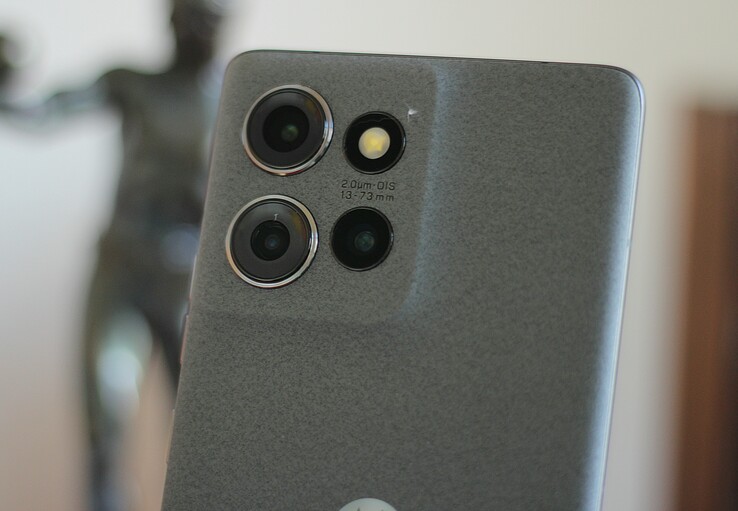




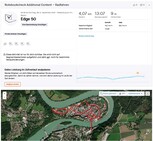

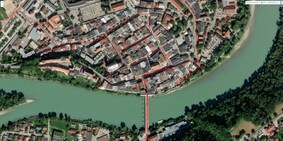
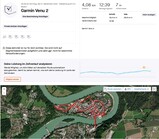
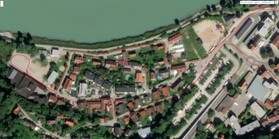
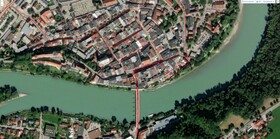


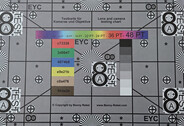



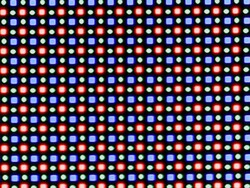
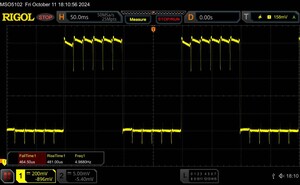
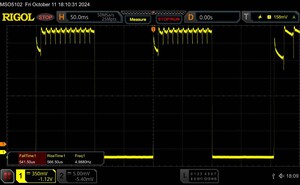
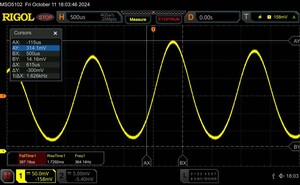





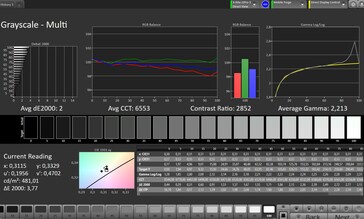
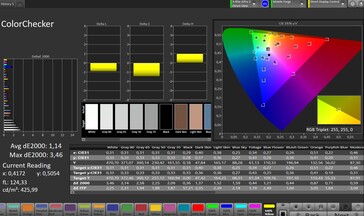
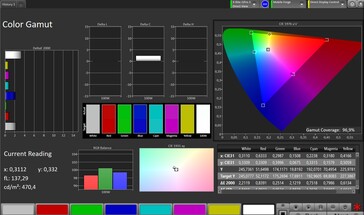
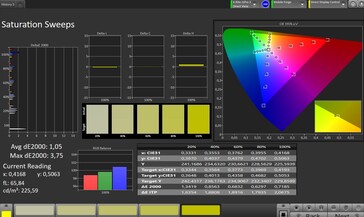
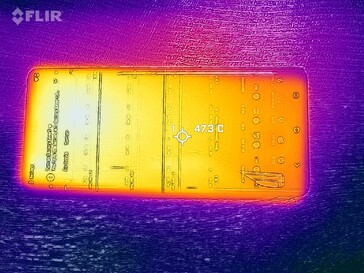
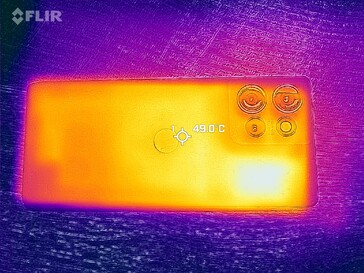
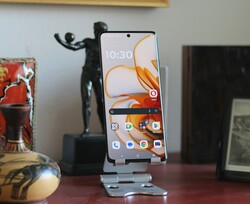
 Total Sustainability Score:
Total Sustainability Score: 



